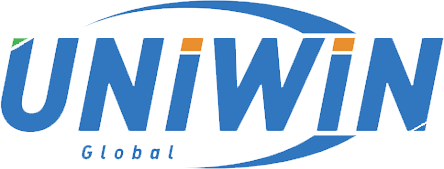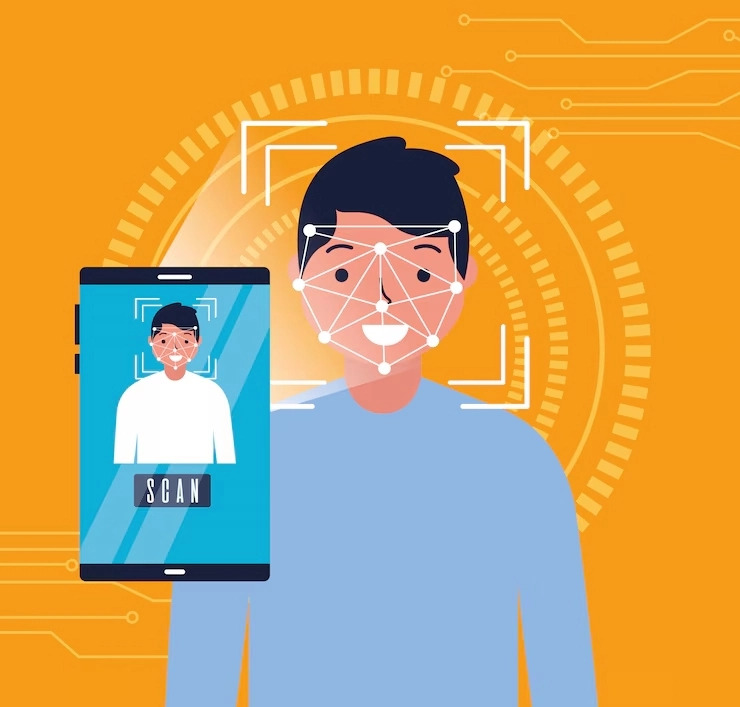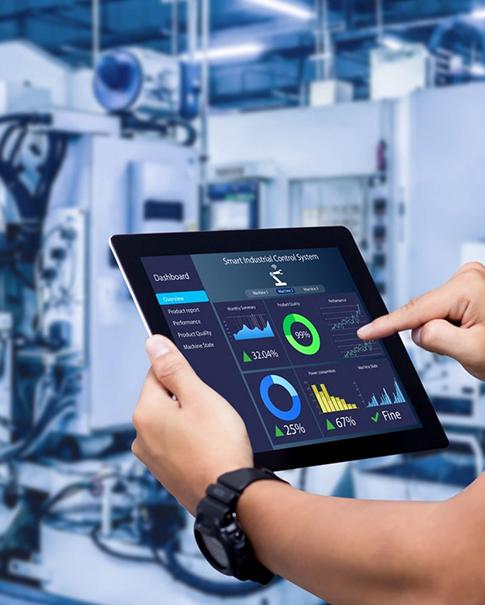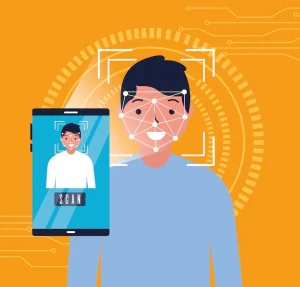
Boost your workplace safety with facial recognition access control—a keyless way for modern businesses. Learn how this cool technology keeps places safe and makes managing entry super easy.
What Is Facial Recognition Access Control and How Does It Work?
Facial recognition access control is a smart security tool. It uses special tech to recognize people by their faces. This system gets rid of old-school methods like keys or cards. It’s safer and works faster for controlling who gets in.
The Basics of Facial Recognition Technology
Facial recognition technology takes a picture of someone’s face. It looks at unique parts, like the space between eyes, nose shape, or jawline. These details turn into a digital code saved in a system. When someone tries to enter, their face is scanned. The system checks if it matches the saved code to let them in.
Key Features of Facial Recognition Access Control Systems
Modern facial recognition systems have neat features. They recognize faces quickly. They can work with other security tools. They also handle different lighting well. Plus, they have tricks to stop people from using fake photos or masks to sneak in.
Why These Features Matter
These systems make security tight. They’re easy to use and save time. They also keep out anyone who shouldn’t be there. This makes them perfect for busy workplaces.
Why Should Businesses Adopt Facial Recognition for Access Control?
Lots of businesses are choosing facial recognition access control. It makes places safer, works smoothly, and stops people who don’t belong from getting in.
Enhancing Workplace Security with Advanced Technology
Facial recognition technology keeps workplaces super safe. Only the right people can enter important areas. It’s way better than keys or cards, which can get lost or stolen. This lowers the chance of security problems.
Streamlining Employee and Visitor Management
These systems make managing people easy. They check identities fast without extra work. This saves time for workers and visitors. It also cuts down on boring office tasks.
Preventing Unauthorized Access Effectively
Facial recognition uses unique face details. This stops issues like shared passwords or copied cards. It’s a strong way to keep out people who aren’t allowed.
Real-World Benefits
Businesses love how these systems make things simple. They’re safe, quick, and cut down on mistakes. This helps everyone focus on their work instead of worrying about security.
How Is Facial Recognition Access Control Applied in Different Industries?
Facial recognition access control systems are flexible. They fit the needs of many different industries.
Corporate Offices and Secured Facilities
In offices, these systems keep private areas safe. Only approved workers can enter. They can also connect to systems that track work hours. This makes managing employees easier.
Healthcare and Pharmaceutical Sectors
Hospitals and drug companies use facial recognition to protect labs, storage rooms, and patient records. It helps them follow strict rules and keep sensitive areas secure.
Education Institutions and Campuses
Schools and colleges use these systems at entry points. They keep students safe and make tracking attendance simple. It’s a big help for busy campuses.
Other Uses
Airports and stores also use facial recognition. It speeds up boarding or protects back rooms. It’s great for any place needing extra safety.
What Are the Key Benefits of Facial Recognition Access Control?
Using facial recognition access control has lots of perks. It’s a smart choice for businesses big and small.
Improved Accuracy and Efficiency in Security Operations
Facial recognition is super accurate. It rarely makes mistakes with who’s allowed in. It’s also fast, so people don’t wait long at busy doors. This keeps security tight without slowing things down.
Convenience and Contactless Authentication
These systems don’t need touching. No cards or keys are required. This makes them easy to use and cleaner, which is important for keeping germs away.
Scalability for Businesses of All Sizes
Facial recognition works for small offices or huge companies. You can adjust it to fit what you need. This makes it great for all kinds of businesses.
Uniwin-Global’s Role
Uniwin-Global offers awesome tools like apartment intercoms and attendance terminals. They use facial recognition technology for tough jobs in places like offices, hospitals, malls, and construction sites. Their WR501 binocular face recognition terminal does face checks, identity proof, and on-site face collection.
More Perks
These systems save time and make things safer. They’re easy to set up and grow with your business. They also make visitors and workers feel secure.
What Challenges Should Be Considered Before Implementation?
Facial recognition access control has tons of benefits, but businesses need to think about a few challenges before using it.
Privacy Concerns and Data Protection
A big worry is keeping face data safe. This info is super personal. If not protected well, it could be stolen or misused. Rules like GDPR or CCPA help keep data secure. Good providers use strong locks on data, like encryption. Businesses should also tell people how their face info is used and get their okay first.
Technical Limitations and Potential Errors
Even though facial recognition systems are advanced, they can have issues. Bad lighting, low-quality cameras, or changes in how someone looks—like new glasses—can mess things up. Many devices, like the WR501 binocular face recognition terminal, have wide dynamic range cameras. These work in bright or dim light. Still, businesses should test systems to make sure they work well in their space.
Cost Implications for Small Businesses
Setting up facial recognition can cost a lot. You need to buy devices, install them, train staff, and keep them working. Small businesses might find this pricey. But the safety and time saved can make it worth it. Businesses should compare costs to long-term gains.
Planning for Success
To avoid problems, pick a trusted provider. Test the system in your workplace. Make sure staff know how to use it. This helps everything run smoothly.
Who Can Provide Reliable Facial Recognition Access Control Solutions?
Choosing a dependable supplier is key to getting a system that fits your needs.
Introducing Uniwin-Global as a Trusted Supplier
Uniwin-Global is a top name in security tech. Started in 2016, they make smart IoT devices for all kinds of businesses. They’re known for creating tools that work well and meet modern needs.
Expertise in Advanced Security Technologies
Uniwin-Global has a wide range of products with facial recognition technology. Their WR501 binocular face recognition terminal has cool features like liveness detection, fast recognition, and working in tough lighting. It’s perfect for places needing strong identity checks.
Tailored Solutions for Business Needs
Uniwin-Global makes products that fit specific needs. Their apartment intercom systems mix facial recognition with audio and video calls using SIP protocol. These work great for homes, offices, and more.
Why Choose Uniwin-Global
Their tools are reliable and easy to use. They’re built for tough jobs and can handle busy places like malls or hospitals. Uniwin-Global helps businesses stay safe with smart solutions.
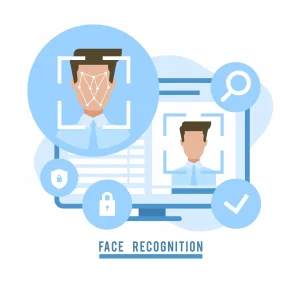
Conclusion: Unlocking Secure Access with Facial Recognition Technology
Facial recognition access control systems change how businesses handle security. They’re safe, fast, and easy. By tackling issues like privacy and tech limits, and picking trusted providers like Uniwin-Global, businesses can make the most of this awesome technology.
FAQs About Facial Recognition Access Control
Q1: How Safe Are Facial Recognition Access Control Systems?
These systems use smart math and strong locks to keep things safe. They rely on unique face details, so it’s hard for the wrong people to get in.
Q2: Can These Systems Work in Dark Places?
Yes! Many devices, like the WR501 binocular face recognition terminal, have special cameras or infrared tech. They work great even in low light.
Q3: How Is User Privacy Kept Safe?
Good providers follow rules like GDPR or CCPA. They use locked storage for face data and clear rules about how it’s used.
